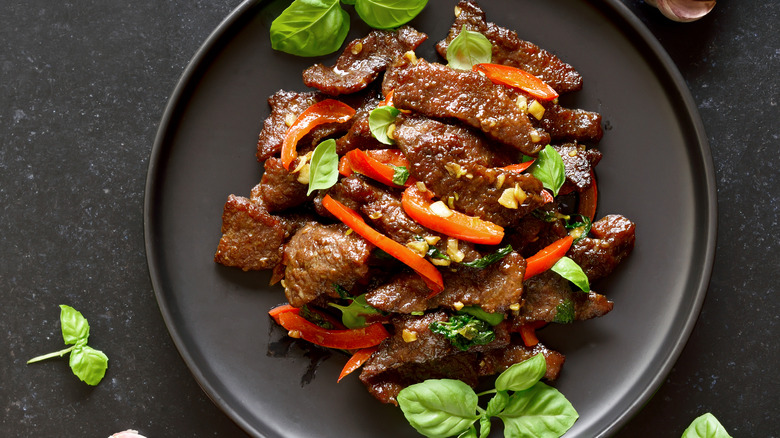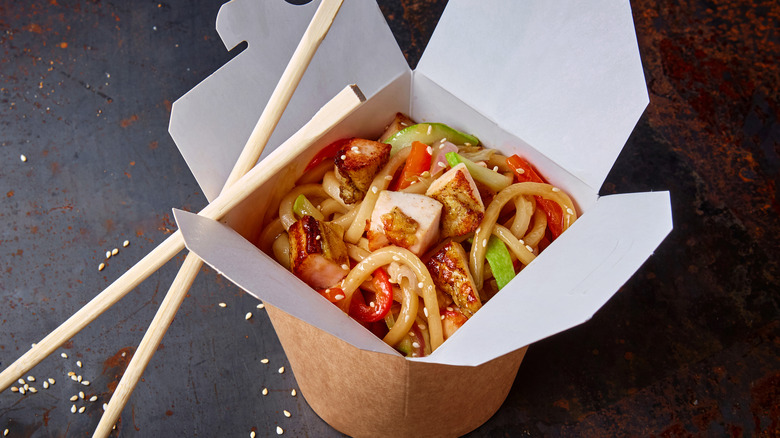Stir fry is a classic dish that never disappoints. It’s delicious, simple to make, a takeout staple, and versatile to boot. You can make it meatless, for example, and it’s perfect to make when meal prepping, too.
What technically is stir fry, though? Essentially, it’s exactly how it sounds: the frying together of vegetables, meat, or any other food together in a pan with sauce. Better Homes & Gardens defines stir fry as “a technique of quickly cooking small, uniform pieces of food in a little hot oil in a wok or large skillet over medium-high heat.” They also say it’s a particularly good way to cook vegetables because it retains their nutrients, as well as their signature colors and crunches.
Traditionally, stir fry is cooked in a wok, a type of pan that has sloped sides that lead down to a smaller bottom. According to Better Homes & Gardens, the wok allows you to cook in “stages,” which means you can position some food in the bottom on the “hot spot” and some on the pan’s sides depending on what needs more time to cook. It takes time to get used to this method of pan frying, but it helps keep you from overcooking your food. Stir fry can be made without a wok, but you’ll want a bigger and deeper pan than your average pan. Using a small or shallow pan is the first big mistake you can make when cooking stir fry.
The secret to good stir fry may lie in one specific ingredient
Stir fry is delicious, and it’s healthier when made at home. Still, it’s not hard to run into issues when cooking it at home, especially on your first couple of tries. But what are some things you should avoid when making it?
According to Bon Appétit, some common mistakes include not cutting your vegetables to the right size, not making a sauce that’s “bold” enough, and seasoning your meat or vegetables too soon. Stir fry is inherently a quick cooking process. You’re working with high heat, so if you cut your vegetables too big, you’ll scorch them before they can fully cook. Similarly, if you season your food too soon, water will be pulled out of it, which will cause your food to steam or get soggy rather than fry up deliciously. Then, you want to make sure you’re making a sauce that can stand up to your crispy meat and vegetables and truly lift it up. Stir fry is often eaten with rice, too, which means the sauce has to be good enough to flavor everything, not just the vegetables and/or meat.
Perhaps the biggest sin you can make, though, is cooking stir fry with the wrong oil. Oil matters here because each oil has its own smoke point. Vegetable oil, for example, can get vegetables crisper than, say, olive oil. And don’t even think about using butter for stir fry. For stir fry, try avocado or canola oils, because these have higher smoke points (via The Kitchn).
With these tips in mind, why not skip the takeout and make some homemade stir fry this week?
Source: Read Full Article


